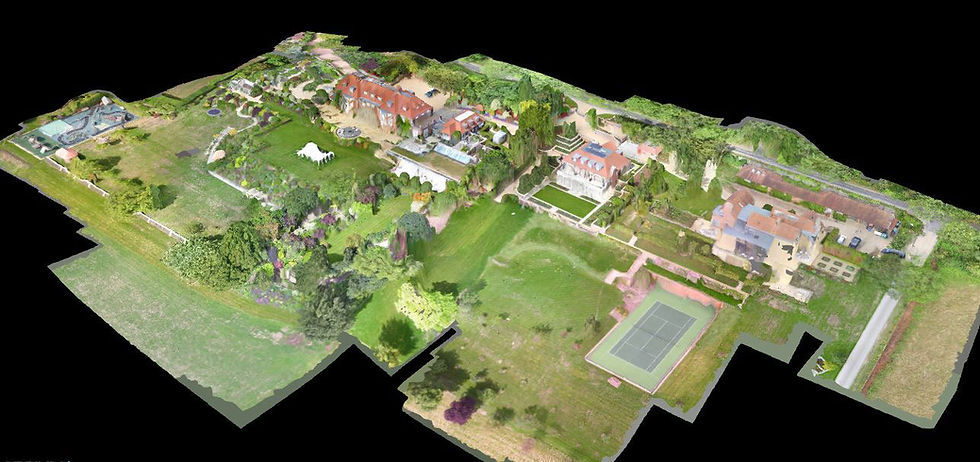Captured vs Aligned Images in Drone Photogrammetry: What is it and why does it matter?
- Hammer Missions

- May 24, 2023
- 3 min read
Updated: Jun 5, 2023

Overview
Drone photogrammetry requires a good understanding of all the steps involved to create a successful 3D model of your desired structure or asset.
Collecting high-quality data is the first step, the higher the quality of the data the better your final output will be, but when it comes to processing those images your captured may or may not always align with the desired output.
In this post we will explain captured images vs aligned images, what this means and how they can affect the quality of your final 3D model.
Captured Images
Captured images, as the title suggests, are the raw images captured by the drone whilst in flight.
These images on your processed 3D Map are highlighted in yellow and represent the exact point where your image was taken whilst running the mission.

Aligned Images
Aligned images are the images selected by the software that 'align' with each other and the model to produce a high-quality 3D model.
These aligned images 'agree' on where the 3D points for the model are in 3D space computed from the 2D images.
These images may or may not align with the original raw captured images.
Aligned images on your processed 3D map are shown in green alongside the yellow captured images.

Why Do Aligned Images Matter?
So why do aligned images matter?
These images align better with each other (aligned images) and the model itself.
Aligned images allow you to tap on any highlighted image to show the corresponding part of the model.

💡 A good model should aim for a high percentage of the captured images to be used as the aligned images.
How to Increase the Number of Aligned Images?
So now we have shown you why aligned images matter how do we increase the number of aligned images?
This is where best practice comes into play, as we have discussed many times in our blog posts.
There are some defined guidelines to follow to get the most out of your photogrammetry, some of the most important are listed below:
Ensure you have good overlap, we would recommend at least an 80% overlap to get adequate coverage of your desired subject.
Ensure the subject being captured is featureful and distinct features can be seen from different images.
Avoid reflective surfaces like water and high shine metal.
Make sure your exposure is static and not subject to change between images.
For more information on photogrammetry please see our posts:
How to See Captured vs Aligned Images?
So how do we see captured vs aligned images in Hammer Hub?
Below we will look at the process of how you view the difference between the two.
1: Open your desired processed project in Hammer Hub, in this example, we will be using a warehouse which we have previously processed.

2: You will already see that the captured images are shown as yellow dots above the structure.

3: To enable the aligned images, select the camera icon in the top right of the page (highlighted below in red)

4: With this open, you will now see you have a separate option alongside captured images, aligned images.

5: Switch this toggle to on to enable aligned images

6: Switch this toggle to off to see just your captured images

Being able to see both images allows you to see all images captured, and all images aligned, giving you the best of both worlds - depending on whether you are trying to inspect every single image in an inspection project or measure specific areas in a mapping project.
Summary
We hope this post has helped explain the difference between captured and aligned images and how it can help in your final processed 3D Model.
If you'd like to learn more about how to produce high-quality data and get the most out of your drone missions, please feel free to visit our learning resources
If you haven't got a Hammer account as of yet and would like to try Hammer Missions you can get started on our free trial.
To learn more about our enterprise solutions, including mission collaboration, data processing, and AI solutions, please contact us at team@hammermissions.com
We look forward to hearing from you.
- Team at Hammer Missions



